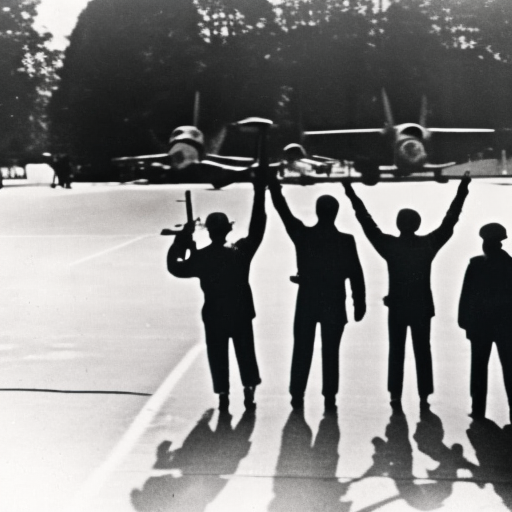Summary: 1960 U-2 Incident
The 1960 U-2 incident was a major event during the Cold War that strained relations between the United States and the Soviet Union. On May 1, 1960, an American U-2 spy plane piloted by Francis Gary Powers was shot down by a Soviet surface-to-air missile while conducting a reconnaissance mission over Soviet territory. The incident exposed the United States’ secret aerial surveillance program and led to increased tensions between the two superpowers.
The U-2 Spy Plane
The U-2 spy plane was a high-altitude reconnaissance aircraft developed by the United States during the late 1950s. It was designed to fly at altitudes above 70,000 feet, which made it difficult to detect and intercept. Equipped with advanced cameras and sensors, the U-2 was used to gather intelligence on Soviet military installations and activities.
The Incident
On the morning of May 1, 1960, Francis Gary Powers took off from a U.S. airbase in Pakistan on a mission to photograph Soviet military sites. As he flew over the Soviet Union, his plane was detected by Soviet radar systems. Despite attempts to evade the pursuing Soviet fighter jets, Powers’ U-2 was hit by a surface-to-air missile and went down near Sverdlovsk (now Yekaterinburg).
International Fallout
The Soviet Union initially denied shooting down the U-2 plane, but when they revealed that Powers had survived and was in their custody, the incident became a major international crisis. The United States, caught in the act of spying, faced embarrassment and condemnation from the Soviet Union and other countries. The incident also threatened to derail an upcoming summit between U.S. President Dwight D. Eisenhower and Soviet Premier Nikita Khrushchev.
Impact on U.S.-Soviet Relations
The U-2 incident severely strained U.S.-Soviet relations. Khrushchev used the incident to denounce the United States and its espionage activities, demanding an apology and an end to the U.S. aerial surveillance program. President Eisenhower initially denied the true nature of the U-2 mission but was eventually forced to admit the spying operation. The incident undermined trust between the two superpowers and contributed to the deterioration of diplomatic relations.
Aftermath
Following the U-2 incident, Powers was put on trial in the Soviet Union and sentenced to ten years in prison for espionage. However, he was released in 1962 as part of a prisoner exchange between the United States and the Soviet Union. The incident also led to the cancellation of the planned summit between Eisenhower and Khrushchev, further escalating tensions between the two countries.
Legacy
The 1960 U-2 incident had long-lasting implications for U.S.-Soviet relations. It highlighted the dangers of aerial reconnaissance and the vulnerability of spy planes to advanced anti-aircraft systems. The incident also prompted the United States to shift its focus to satellite-based reconnaissance, which eventually led to the development of more advanced surveillance technology.
In conclusion, the 1960 U-2 incident was a significant event during the Cold War that exposed the United States’ secret aerial surveillance program and strained relations between the United States and the Soviet Union. The incident had a lasting impact on U.S.-Soviet relations and led to the cancellation of a planned summit between the two superpowers. It also highlighted the need for more advanced surveillance technology and marked a shift towards satellite-based reconnaissance.












